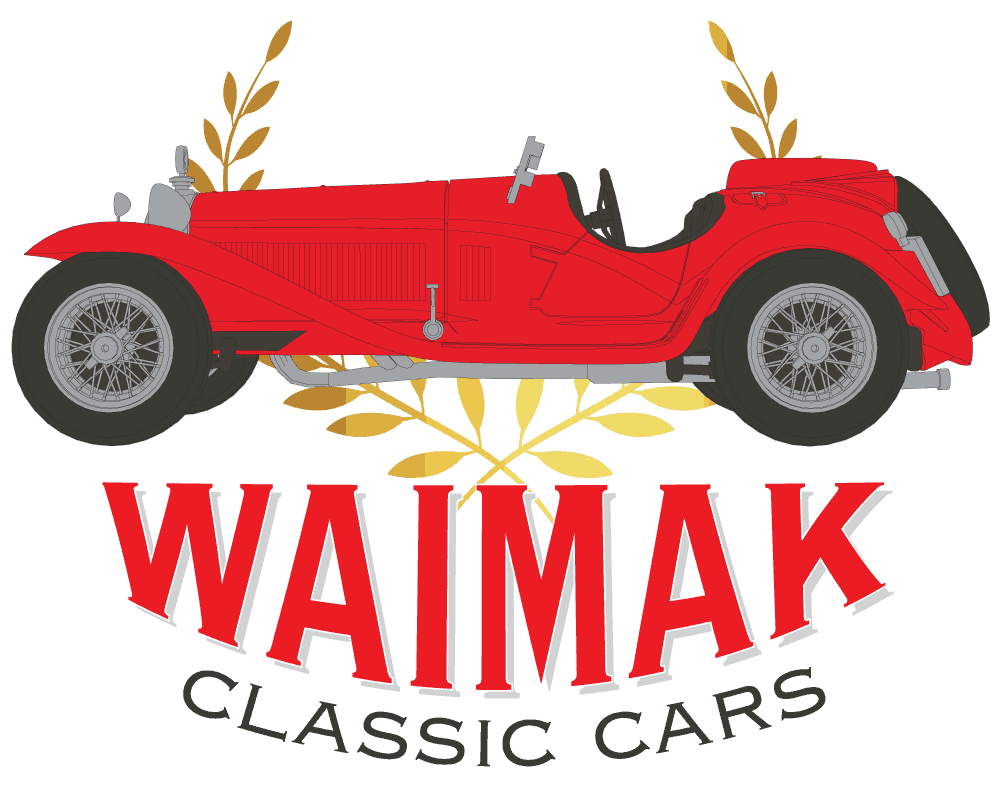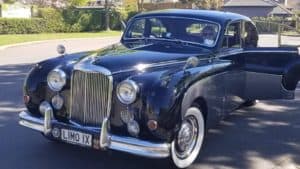
The Jaguar E Type: 60 Years Young
Share With Friends:
By Ben Selby
You know a car is regarded as automotive art when the Godfather of fast cars thinks it’s a looker. Enzo Ferrari himself famously said the Jaguar E Type was the best-looking car ever produced. Il Commendatore did have a point. Built in Coventry, the Jaguar E Type is a masterpiece, and takes pride of place in the list of the greatest looking cars ever built.
However, the E Type was more than a pinup. It was a serious performance car, and one which turns 60 this year. I have always wanted to drive an E Type, and thanks to Waimak, this dream became a reality.
The E Type, or XKE as it was known as in America, can trace its roots back to the C Type and D Type racing cars which dominated the Le Mans 24 Hours during the 1950s. The man responsible for the slippery bodywork was aerodynamicist Malcolm Sayer, and he would have a strong influence in how the next Jaguar sports car to replace the ageing XK150 would look.

It is said that when the prototype was presented to Jaguar boss, Sir William Lyons, he wasn’t entirely impressed. He wasn’t a fan of the rear end, and couldn’t see it being a big seller. Lyons was forced to eat his words, because when Jaguar unveiled the E Type at the 1961 Geneva Motor Show, it stole the show.
People were literally queuing up for information and test drives. The interest was so large, Jaguar had to send a second E Type demonstrator to Switzerland as soon as possible, which meant a Jaguar test driver had to drive it from the Coventry factory to Geneva overnight.

The E Type was unlike any car ever built before it, it just looked like nothing else on the road. When the car made its American debut at the New York Auto Show, Frank Sinatra was smitten, saying “I want that car, and I want it now.” In fact, the list of celebrities who owned an E Type was endless, with names like Tony Curtis, Steve McQueen, Charlton Heston and Princess Grace of Monaco joining the E Type family.
As well as being achingly beautiful, the Series 1 E Type was also the fastest production of the time, with a top speed of nearly 150mph. A few cars could do the 150mph Jaguar claimed, but it later emerged the Jaguar souped up the cars lent to Journalists. It was also astonishingly good value, costing just 2,000GBP. To put that in perspective, a V12 Ferrari was around the 6,000GBP mark.

The Series 1 featured a 3.8L straight six engine with a four-speed manual gearbox. This grew to 4.2L by 1964 and the E Type was available as a coupe and roadster. The E Type also sported a front subframe carrying the engine. The front suspension and front bodywork were bolted directly to the body tub. As a result, the E Type weighed in at a mere 1315kg.
The E Type Series 2 replaced the Series 1 in 1968. The Series 2 featured styling tweaks to meet demands for the US market. The Series 3 arrived in 1971 and sported a gargantuan 5.3L V12 with 272hp. In Jaguar’s eyes, the E Type by now was growing long in the tooth and it was succeeded by the V12 XJS in 1975.

The car you see here is one of the later Series 3 cars with that aforementioned V12 and an automatic gearbox. This example is also a 2+2, so the wee ones, or the corgi can come along for the ride.
While the most sought after E Type is a Series 1 4.2 litre Roadster with a synchromesh manual gearbox, there is still something utterly charming about the later Series 3. While the lines of the Series 1 are purer, this Series 3 2+2 still a jaw dropping looker, especially in British Racing Green with tan leather and wire wheels. Basically, you can’t get more classic Jaguar than that combo. Also, the Series 3 can still be had for five figures. Something you really can’t say for any Series 1 or 2.

Once you have finished drooling over every inch of that beautiful body, the temptation becomes too great, you have to jump inside. The petite door handles require a couple of fingers and a thumb to open the door which swings out and almost up. Slide over the chassis rail and you are in.
Once inside, you find yourself sitting quite high up and almost looking down on those classic white-on-black and wood rim steering wheel. The seats themselves are immensely plush akin to a leather backed lounge chair. Operating the lights, wipers and other gadgets are achieved by pushing one of the plethora of chunky switchgear on the centre console. As the rain was a tad schizophrenic during the day, it was helpful to know just where those wiper controls were.

I could stand it no longer, I had to drive this thing. Choke out, a quick turn of the ignition key, and that Olympian 12-cylinder engine purred into life, quite literally almost. Today’s V12s make announce their activation with all manner of melodious pageantry. However, the E Type’s 12 pot hums softly in the background. Honestly, there are mausoleums which are louder than this.
A blip of the throttle and things wake up. You can here the cat purring louder in a caddish sort of way. It’s a nice noise, though not quite as good as the Series 1 six cylinder. Anyway, no matter, its still an E Type and that is all that matters.

Drive is selected and we are away. I had been waiting 15 years to drive an E Type and was determined not to let anything spoil it. However, the moment I reached State Highway One, the heavens opened. Great, time to activate those wipers.
With nearly 50-year-old wipers doing their job well, nothing could distract me from the job in hand. The E Type was always designed for the trans continental thrash so the jet setting playboy could reach Monte Carlo before dinner time.

The Series 3 certainly lives up to this, for once you press that throttle, its long V12 legs start to run. Press the throttle harder, and that long priapic bonnet which seems to stretch to the horizon rises and you surge forward.
By now the NZ open road speed limit is not far away, in fact it arrives much quicker than first expected. Sitting at a steady 100, the E Type feels solid and seems to find a jaunt through North Canterbury sort of easy.

The suspension soaks up all matter of bumps with considerable ease and the auto box provides smooth shifts. By now, the rain had stopped and it was time to ease off the power and cruise. The E Type is king of this kind of motoring.
Leaving the motorway and onto the winding B roads, the E Type is just as at home here as on wide open tarmac. While the power assisted steering can feel a tad vague, it doesn’t require too much feed in while in a corner for the big cat to navigate it quickly. You have to be positive though, and keep the power on. Despite being quite soft, the E Type is still good fun in the bends.

The other theatre of E Type excellence is how it makes you and others feel. Anyone who drives an E Type will very quickly become familiar where all the shop windows are in their neighbourhood. You will be spending plenty of time looking into them when stationary at the lights.
As a boy waved to me while waiting to cross the road, he couldn’t take his eyes off the Jag. If the E Type till gets gawps of admiration today, imagine what must it have been like to see one on your high street for in 1961?

So, driving an E Type. Was it a case of don’t meet your heroes? Absolutely not. The Jaguar E Type is nothing short of pure magic. The looks, the comfort, the heritage, and the class are really hard to beat.
The Series 3 may not regarded by many as the holy grail of the E Type, it is more about cruising than charging through hairpins. However, it has certainly endured and is fast becoming appreciated as a proper E Type in its own right. All in all, I defy anyone not to have a drive of this icon and not be utterly smitten.






Comments 3
Of course! I’m just one of countlessly millions who’ve fell under the ‘E’ types spell. But I’m wondering just how stacked things are with regards to these latest? Jags, such as the XK8’s and the XKR’s onwards?
I’m seriously considering an XKR as it’s so similar looking to an actual E type. Any comments, suggestions or recommendations would/will be gratefully accepted.
The E-type really is a magnificent vehicle. I’ve not had the privilege of driving one yet however I certainly appreciate its looks and history!
Hi.
Thanks for the feedback. Glad you enjoyed the story!